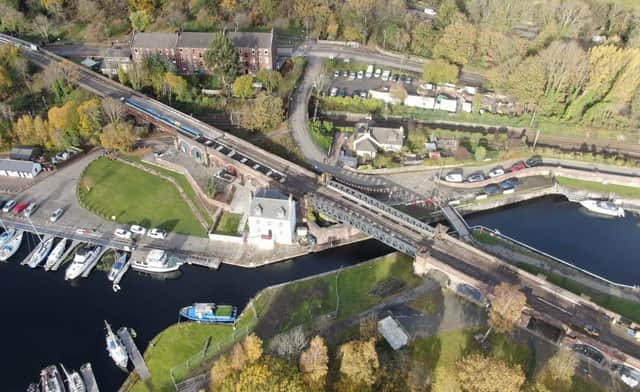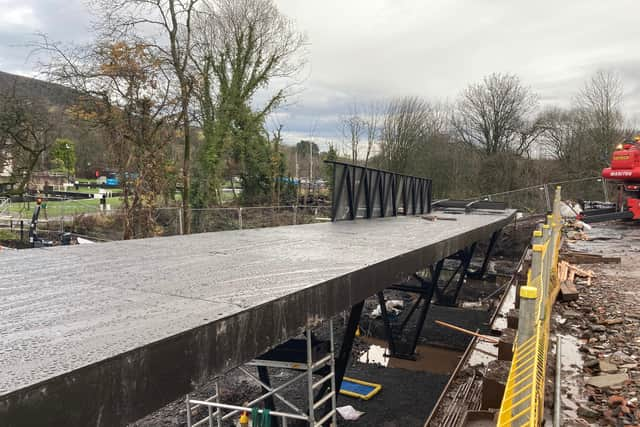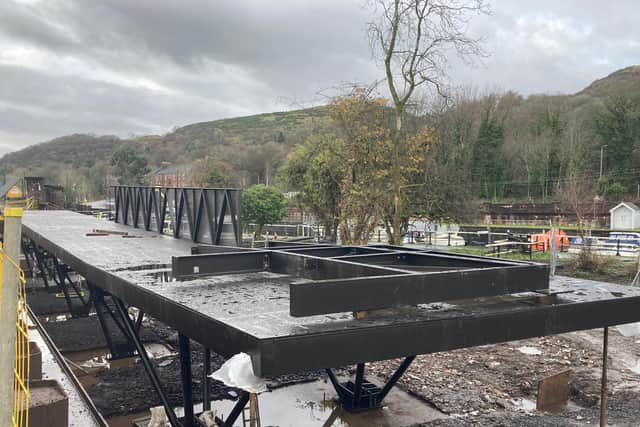New York-style High Line path milestone on Forth & Clyde Canal


The steel structure will provide access to a restored former railway swing bridge over the western end of the Forth & Clyde at Bowling in West Dunbartonshire.
This will form part of a new 500m-long “linear park” at Bowling harbour called The Bowline to be opened next summer.
Advertisement
Hide AdAdvertisement
Hide AdIt will link the canal towpath with a national cycle network route between Glasgow and Loch Lomond which is largely off road.


Scottish Canals said it was inspired by the hugely-popular High Line walkway in New York City, which was created from an elevated railway.
It will feature new viewpoints over the canal and River Clyde.
The 65m ramp, made by Coatbridge Engineering, is being installed by Mackenzie Construction.
Scottish Canals chief executive Catherine Topley said: “We are committed to creating ‘one of a kind’ destinations across Scotland’s canal network and Bowling harbour’s journey of transformation is a great example of this.


“The new ramp will connect active travellers [cyclists, walkers and wheelers] passing through Bowling to the local businesses located in the renovated [railway] arches, boosting the local economy and supporting new jobs.”
Construction of the ramp follows repairs and repainting of the 124-year-old bridge, which started three years ago.
The crossing had lain derelict since the Caledonian and Dunbartonshire Railway closed in 1960.
Advertisement
Hide AdAdvertisement
Hide AdCycle and footpath developers Sustrans has said the new section of the Glasgow-Loch Lomond route offered “great potential to further attract cyclists and visitors, whilst connecting the corridor as a more direct and enjoyable traffic-free route".
Deputy chief executive John Lauder said: “We are delighted to support this exciting project along national cycle network route 7 through our Places for Everyone and Network Development funds, both of which are funded by Transport Scotland.
“The Bowline project is another key step on Scotland’s journey towards transforming the national cycle network into a true network of accessible and available paths for everyone, connecting cities, towns and countryside, loved by the communities they serve.”
Scottish Canals said the latest stage in the transformation of Bowling harbour, undertaken in partnership with the local community, “has brought new businesses, activity, vibrancy and economic benefits to the canal and celebrated Bowling’s important role as western gateway to the lowland canal network.”
It said: “This is an important step forward in Scottish Canals’ plans for regenerating the area and bringing the vision for the harbour to fruition.”
The Forth & Clyde Canal, which was completed 230 years ago, meets the Clyde at Bowling.
The waterway which spans the Central Belt to Grangemouth on the Forth, was closed in 1963 then re-opened as part of the £83.5 million Millennium Link project.
Britain’s largest canal restoration also saw the Union Canal between Falkirk and Edinburgh brought back in to use.
Advertisement
Hide AdAdvertisement
Hide AdA flight of locks which connected the two canals was replaced by the Falkirk Wheel, the world’s only rotating boat lift, which has become a major tourist attraction.
A message from the Editor:
Thank you for reading this article.
We're more reliant on your support than ever as the shift in consumer habits brought about by coronavirus impacts our advertisers.
If you haven't already, please consider supporting our trusted, fact-checked journalism by taking out a digital subscription.
Comments
Want to join the conversation? Please or to comment on this article.